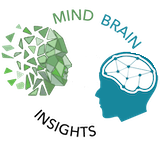With a BCI-related challenge, the first step is to choose a task or mental command. The more specific the description the better. This includes the typical user, BCI device, environments, situations and other project details. The project can be real or hypothetical. For example, the command might be to “send a text to a friend” using their phone, while at home, just by thinking about it. Or, the task might be for a paralyzed person to “reach to grasp my phone” with a neuroprosthetic arm & hand, using visualization.
Once the challenge is defined, and both parties agree, Mind Brain Insights, LLC can provide a response to the challenge, in the form of a 1-3 page analysis. This features (a) a definition of the subject’s mind, and (b) how to map this to the brain, and brain signal. How to construct a mind-based signature and classifier can also be part of the analysis.
The response should be compared to another’s analysis. This allows our analysis to be more fully understood, while pointing out potential shortcomings in the conventional one.
Aspects of Mind which can be Included in the Challenge:
- Perception: vision, hearing, smell, touch, taste, somatosensation
- Recognition, Identification
- Meaning
- Thoughts and thinking
- Goals
- Attention
- Emotion, motivation, arousal
- Imagination
- Episodic memory
- Any cognitive neuroscience category (including Russell Poldrack’s Cognitive Atlas): the reward center, executive control, working memory etc.
- Intention (to do, think, experience…)
- Language: hearing, speaking, writing, reading
- Inner speech
- Activities and tasks
- Motor control
- The self (perceptual & conceptual)
- Prediction
- Situations (social, work, leisure…)
- Conscious or unconscious states & processes
- A general conception, or specific example, of any of the above
- Any combination of the above
